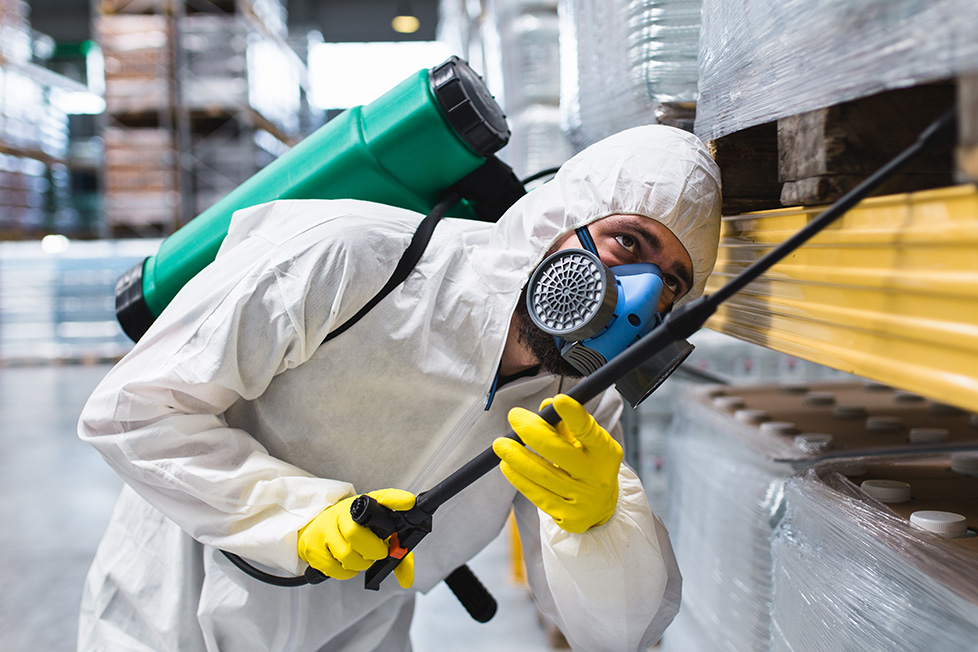Reliable Pest Control for a healthier living space.
Reliable Pest Control for a healthier living space.
Blog Article
Eco-Friendly Bug Control Approaches for Taking Care Of Wildlife in Urban Locations
Urban areas often locate themselves at the crossway of human activity and wildlife, causing unique obstacles in bug administration. Environmentally friendly approaches emphasize sustainable conjunction, employing methods such as environment adjustment and natural repellents to reduce human-wildlife conflicts. These approaches not only protect the atmosphere but also enhance community interaction in wildlife administration. As metropolitan populations continue to grow, comprehending the dynamics of wildlife communications ends up being significantly crucial. What innovative techniques can be implemented to make certain both environmental equilibrium and metropolitan safety? Discovering this question discloses a compelling landscape of potential services.
Recognizing Urban Wild Animals Dynamics
Comprehending Urban Wild animals Dynamics is crucial for creating efficient and eco-friendly bug control techniques. Urban areas are progressively becoming environments for different wildlife species, driven by aspects such as habitat fragmentation, food accessibility, and human advancement. Recognizing these characteristics permits a nuanced strategy to pest monitoring that aligns with eco-friendly principles.
Urban wildlife typically consists of species such as raccoons, squirrels, and birds, which adapt to city atmospheres, finding niches in green rooms, parks, and even suburbs. Their visibility can bring about problems with people, especially when they manipulate human resources for food and shelter. Comprehending the actions and environmental roles of these types notifies methods that lessen negative interactions while promoting biodiversity.
Moreover, recognizing the interdependencies within city ecosystems aids in recognizing crucial areas for environment conservation and remediation. This knowledge adds to the development of incorporated insect monitoring (IPM) strategies that take into consideration the ecological equilibrium, consequently reducing reliance on hazardous chemicals. By promoting coexistence between people and metropolitan wildlife, cities can produce healthier environments that profit both homeowners and local ecosystems, leading the way for lasting urban living.
Natural Repellents and Deterrents
Natural repellents and deterrents provide a lasting choice to standard pest control approaches by utilizing the power of nature to maintain undesirable types at bay. These eco-friendly remedies commonly use plant-based components, vital oils, and other normally occurring substances that hinder pests without hurting the setting.
One effective all-natural repellent is peppermint oil, which is understood to ward off rodents and insects. Its solid fragrance is unpleasant to numerous bugs, making it a preferred choice for urban settings. In a similar way, vinegar and citrus peels can act as deterrents, as their strong odors are typically unappealing to different wildlife.
Additionally, diatomaceous planet is a natural powder that can be spread in areas susceptible to pest activity, properly dehydrating and preventing insects without posing threats to non-target types. Garlic sprays and neem oil are identified for their capacity to drive away a vast range of parasites, consisting of both pests and larger wild animals.
Carrying out these natural repellents not only lowers reliance on chemical pesticides however likewise advertises a much healthier urban ecological community, fostering a much more balanced conjunction between people and wild animals. By utilizing these approaches, city locations can successfully handle bug populations while decreasing environmental impact.
Habitat Adjustment Techniques
Effective habitat adjustment methods play an important function in sustainable bug monitoring by changing the atmosphere to make it much less favorable to Clicking Here pest problems. By recognizing the eco-friendly characteristics of metropolitan locations, homeowner can execute tactical modifications that deter insects while promoting biodiversity.
(Bed bug exterminator Port Charlotte)One key strategy includes preserving correct sanitation. This includes routine waste elimination, protecting trash can, and eliminating standing water to reduce breeding websites for pests and rodents. Additionally, landscaping methods such as choosing native plants can enhance eco-friendly balance, giving habitats for valuable microorganisms while minimizing resources for parasites.
Another crucial method is to seal entry factors in structures. Examining and repairing fractures in foundations, wall surfaces, and home windows can considerably reduce parasite accessibility. Moreover, creating physical barriers, such as fences or plant barriers, can prevent wildlife motion into human-inhabited areas.
Integrated Pest Management Practices
Structure upon environment modification strategies, integrated bug management (IPM) techniques offer a holistic method to managing insect populations while decreasing environmental effect. IPM integrates various methods, including organic, social, mechanical, and chemical controls, to achieve effective bug monitoring.
Biological control entails the intro of natural predators or bloodsuckers to lower parasite populaces. Cultural methods, such as plant turning and hygiene, interrupt pest life process and diminish their environments - Pest Control. Mechanical controls, like catches and barriers, supply instant relief from insect pressures without chemical intervention
Chemical controls are made use of as a last resource, concentrating on targeted applications that restrict injury to non-target types and the setting. The selection of eco-friendly pesticides, when required, is integral to the IPM framework. Additionally, checking bug populaces and examining prospective damages aids educate decision-making, ensuring that interventions are prompt and reliable.
Neighborhood Involvement and Education And Learning

(Honey Bee Relocation)Workshops and informative sessions can equip residents with understanding regarding indigenous types, environment preservation, and reliable non-toxic bug administration methods. Collaboration with schools, neighborhood organizations, and government companies further boosts instructional outreach, making certain that crucial details reaches diverse audiences.
In addition, community-led campaigns, such as community clean-up days and environment repair jobs, not just advertise biodiversity yet additionally strengthen area ties. Pest Control. By encouraging citizens to share their experiences and monitorings, communities can establish targeted techniques that address particular neighborhood pest problems
Integrating responses from locals into pest monitoring prepares makes it possible for a more responsive and adaptive strategy to wildlife challenges. Inevitably, notified and engaged neighborhoods are essential to accomplishing long-term success in green bug control, leading to healthier urban environments that respect both human and ecological requirements.

Conclusion
In final thought, eco-friendly pest control approaches offer lasting services for taking care of city wildlife. By focusing on environment alteration, using all-natural repellents, and applying integrated bug monitoring methods, neighborhoods can cultivate a harmonious conjunction with neighborhood animals.
Report this page